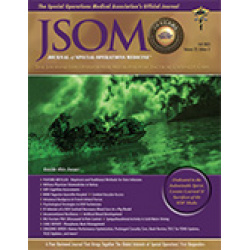Artificial Blood Development Implications for Military Medicine
Melanson V, Hershfield J, Deegan MK, Cho H, Perinon D, Bateman SL, Barnhill JC 23(3). 63 (Journal Article)
Massive hemorrhaging remains the most common cause of preventable battlefield deaths. Blood used for trauma care requires a robust donation network, capacity for long-term storage, and extensive and accurate testing. Bioengineering technologies could offer a remedy to these constraints in the form of blood substitutes-fluids that could be transfused into patients to provide oxygen, carry away waste, and aid in coagulation-that would be used in prolonged casualty care and in far-forward settings, overcoming the obstacles of distance and time. The different molecular properties of red blood cells (RBCs), blood substitutes, and platelet replacements contribute to their respective utilities, and each type is currently represented in ongoing clinical trials. Hemoglobin oxygen carriers (HBOCs) are the most advanced RBC replacements, many of which are currently being evaluated in clinical trials in the United States and other countries. Despite recent advancements, challenges remaining in the development of blood alternatives include stability, oxygen capacity, and compatibility. The continued research and investment in new technologies has the potential to significantly benefit the treatment of life-threatening emergency injuries, both on the battlefield and in the civilian sector. In this review, we discuss military blood-management practices and military-specific uses of individual blood components, as well as describe and analyze several artificial blood products that could be options for future battlefield use.


 Español
Español 



